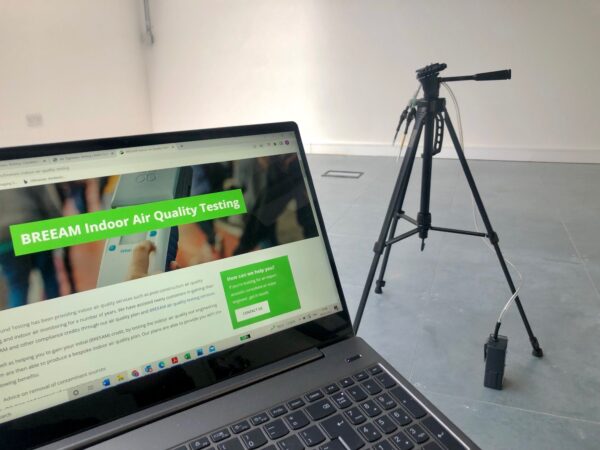We often undertake Indoor VOC testing for BREEAM; however, what does the term VOC stand for? VOC means “volatile organic compounds.” These gases are released from numerous products and building materials through a process called off gassing.
VOCs Can Produce Adverse Health Effects
Because VOCs is a general category of chemicals that may be produced during the off gassing of building materials, determining the exact health effects of high VOC levels isn’t impossible. However, here are general symptoms that clients who are suffering from high VOC levels have previously reported:
- Respiratory irritation
- Headaches
- Lethargy
- Nausea
- Itchy eyes
- Stuffy nose
- Ongoing respiratory infections

What are Volatile organic compounds (VOCs)
Volatile organic compounds (VOCs) are emitted as gases from certain solids or liquids. VOCs include a variety of chemicals, some of which may have short and/or long term adverse health effects. Concentrations of many VOCs are often much higher indoors (up to ten times higher) than outdoors. VOCs are emitted by thousands of products, that’s why BREEAM Indoor Air Quality testing is required for all new buildings, so these products can be identified and action taken to reduce the harmful effects of the VOCs.
Volatile organic chemicals are widely in household products such as Paints, varnishes and wax, as they all contain organic solvents. Also, many cleaning products such as degreasing, disinfecting, cosmetic products can contain VOCs. All fuels also contain organic chemicals. All of these products can release organic compounds when you are using them and even whilst they are in storage.
Here is a short list of some of the common chemical contaminants found in occupied buildings:
- Formaldehyde
- Methylene chloride
- Benzenes
- Perchloroethylene
- Chlorocarbons
- Chlorofluorocarbons
What happens after the indoor air quality test?
After the indoor air quality test, we will send you a detailed test report. This shows you which gases are present within your building, and where they are likely to have come from. It is essential that testing for Formaldehyde and VOCs is carried out to the specified BREEAM Hea02 exacting standard required on your project. All test samples must be analyzed in a UKAS accredited laboratory and may take 2-3 weeks to arrive back at our office; however we can request a quicker service for an extra cost.
Call or email us today about Indoor Air Quality Testing. We are here to help! Please call us on 01525 303905 or email us on info@aptsoundtesting.co.uk about our Indoor Air Quality Testing services. We are here to help! Alternatively, please visit our contact page here.

